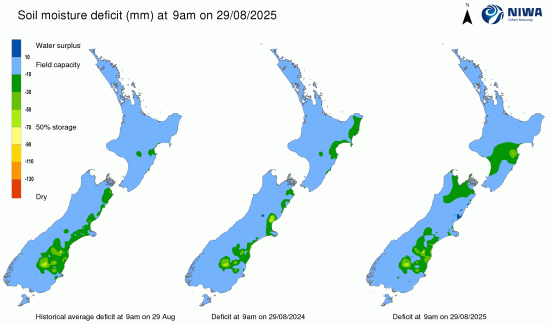
Here's our summary of key economic events over the holiday weekend that affect New Zealand, with news the world's two largest economies are showing vulnerabilities
First up today we should note than many markets were closed yesterday in the US for Juneteenth, a Federal holiday that remembers June 19, 1865 when emancipation was declared in Texas, ending the US Civil War. But they are back open today.
US data shows the Philly Fed's factory index booked another retreat, the third in a row although only a small one. They aren't yet benefiting from reshoring. New order levels fell. And price increases reported continued at a high level although the pace eased somewhat in this latest update.
That data was just a part of the Conference Board's leading economic indicator series. And this slipped yet again in May, with the April index being revised sharply lower. They say this is "triggering the recession signal." Industrial production was the weakest contributor to the index in May. Readers may not be surprised that a Trump tariff-tax recession is on the way for the US, but we probably should brace for global consequences in 2025. It could be tougher than anticipated.
At least one influential Fed governor thinks the FOMC will have to start cutting interest rates soon to lean against the recession threat. A July cut is what he suggested, saying “I think we’ve got room to bring it down, and then we can kind of see what happens with inflation.” Recession threats trump inflation threats for him.
Across the Pacific in Japan, May CPI inflation edged lower to 3.5%, the lowest annual rate of the year. Energy costs remained elevated, but dipped in the month. Also elevated and also dipping were food prices, now running at a +6.5% rate. However within that rice prices are almost double year ago levels, a very high profile marker that worries everyone.
In China, the eye-catching retreat of foreign direct investment in April (a net outflow -US$4.8 bln) was arrested in May, positive by +US$17.8 bln for the month even if it was off the unusually declining base in April. Still, year to date, foreign direct investment into China remains unusually low, barely +US$50 bln in those five months and well below the almost US$70 bln in the same five months of 2024. For either year, these are not large amounts for a country the size of China. In 2023 the five month inflow was +US$84 bln, in 2022 it was +US$88 bln. It is a negative track that is sensitive for them.
In Turkey, their central bank left its policy rate unchanged at 46% overnight, as expected. You may recall their raised it +350 bps at their May review.
Meanwhile, at the Bank of England their governors voted 6-3 to keep their policy rate steady at 4.25% at its June meeting. Although this was the result expected, the three dissenters wanted a -25 bps cut and that was one more dissenter than was expected.
In Norway however, they cut their policy rate by -25 bps to 4.25%. That was their first cut in five years.
Taiwan held its official rate steady at 2%.
The Philippines cut theirs by -25 bps to 5.25%.
In China, their central bank left its Loan Prime Rates unchanged at their record low levels after the -10 bps dip last month.
Meanwhile, Aussie miners are looking at some some surprisingly weak May data for steel production in China. May and June are usually their peak months for production, but not this year. The May data shows it -6.9% lower than the same month in 2024, at 86.5 mln tonnes. That represents a very large fall away in looming iron ore requirements if it holds in June, a more than -6 mln tonne shortfall per month. (Steel production data can be seen here.)
Overall global container rates fell -7% last week from the week before to be -30% lower than year ago levels. That ends a five week period of rising rates. Outbound rates China to the USWC fell sharply, but interestingly those for China to the EU rose sharply. Meanwhile, bulk freight rates also retreated, ending -9% lower than week ago levels but are still +63% higher than year-ago levels.
The UST 10yr yield is now at 4.38%, and down -2 bps from yesterday. A week ago it was 4.41% for a net -3 bps dip. The key 2-10 yield curve is now steeper at +47 bps. Their 1-5 curve is now inverted by -12 bps. And their 3 mth-10yr curve more positive at +22 bps. The Australian 10 year bond yield starts today at 4.21% and down -3 bp from yesterday but up +3 bps for the week. The China 10 year bond rate is unchanged at 1.64%. The NZ Government 10 year bond rate starts today at 4.60%, unchanged but down -4 bp from this time last week.
Wall Street is back from their brief Juneteenth holiday with the S&P500 down -0.2%. That makes it down -0.7% for the week. Overnight, European markets were very mixed, bookended by London down -0.2% and Frankfurt up +1.3%. Yesterday, Tokyo closed down -0.2% for a +0.9% weekly gain. Hong Kong rose +1.3% on Friday for a -1.1% weekly loss. Shanghai was dipped -0.1% for a -0.3% weekly change. Singapore ended down -0.3% on Friday. The ASX200 ended its Friday trade down -0.2% for a weekly -0.5% retreat. And of course the NZX50 was on holiday yesterday, ending its week +0.3% firmer.
The Fear & Greed index is now in the 'neutral' zone from the 'greed' zone a week ago.
The price of gold will start today at US$3,365/oz, and down -US$21 from Thursday.
American oil prices are marginally lower, down -50 USc from Thursday at just under US$74/bbl while the international Brent price is up +US$1, now just on US$77/bbl.
The Kiwi dollar is now just on 59.7 USc, down -½c from Thursday. Against the Aussie we are down -20 bps at 92.5 AUc. Against the euro we are down -70 bps at 51.8 euro cents. That all means our TWI-5 starts today at on 67.7 and down -50 bps from yesterday.
The bitcoin price starts today at US$103,348 down -0.9% from Thursday. Volatility over the past 24 hours has been modest at just under +/-1.9%.
Daily exchange rates
Select chart tabs
The easiest place to stay up with event risk is by following our Economic Calendar here ».
4 Comments
Nobody could deny that President Trump is the grand master of distraction. Two weeks time out on will I or won’t I bomb Iran, hogs the headlines, domestic and international, and overlays all the brewing troubles in the former. Amongst the big game of dominoes though is the very real temptation of possibly catalysing a regime change in Iran and a resultant weakening of the Chinese and more importantly Russian influence there. A very big question mark on that obviously, as such outcomes are neither predictable nor particularly stable.Meanwhile in true Trumpian form, the whole world waits and wonders.
The giant squid says buy miners not bullion.... They must be trying to exit miners.....
They are calling gold down to 3k possibly 2.6k
Canada’s national housing agency says it is no longer possible to build enough homes to bring housing affordability back to 2004 levels and it will start using 2019 as a more realistic benchmark.
CMHC’s earlier projections suggested that with a dramatic increase in housing supply—building an additional 3.5 million homes by 2030, on top of the 2.3 million already expected—Canada could return to 2004 affordability levels. However, the agency now acknowledges that this was a theoretical exercise and not practically achievable, especially after the surge in prices during and after the COVID-19 pandemic.
https://chec-ccrl.ca/wp-content/uploads/2024/02/Full-rethinking-CMHC-5…
No it wouldn't, even if it built them.
This is the nonsense of economics, projected.
Surplus energy per head, peaked back around 1980. Energy supply in total, seems to have peaked now. But the energy cost of energy has being increasing exponentially, as has the energy-demand of maintenance (of a never-bigger fleet of infrastructures).
That trend will continue to outpace - essentially ability to earn will decrease vs the supply of work, and of stuff. And there goes your ratio. It ain't ever coming back. But neither is GROWTH, so how long the monitoring format lasts...



We welcome your comments below. If you are not already registered, please register to comment.
Remember we welcome robust, respectful and insightful debate. We don't welcome abusive or defamatory comments and will de-register those repeatedly making such comments. Our current comment policy is here.